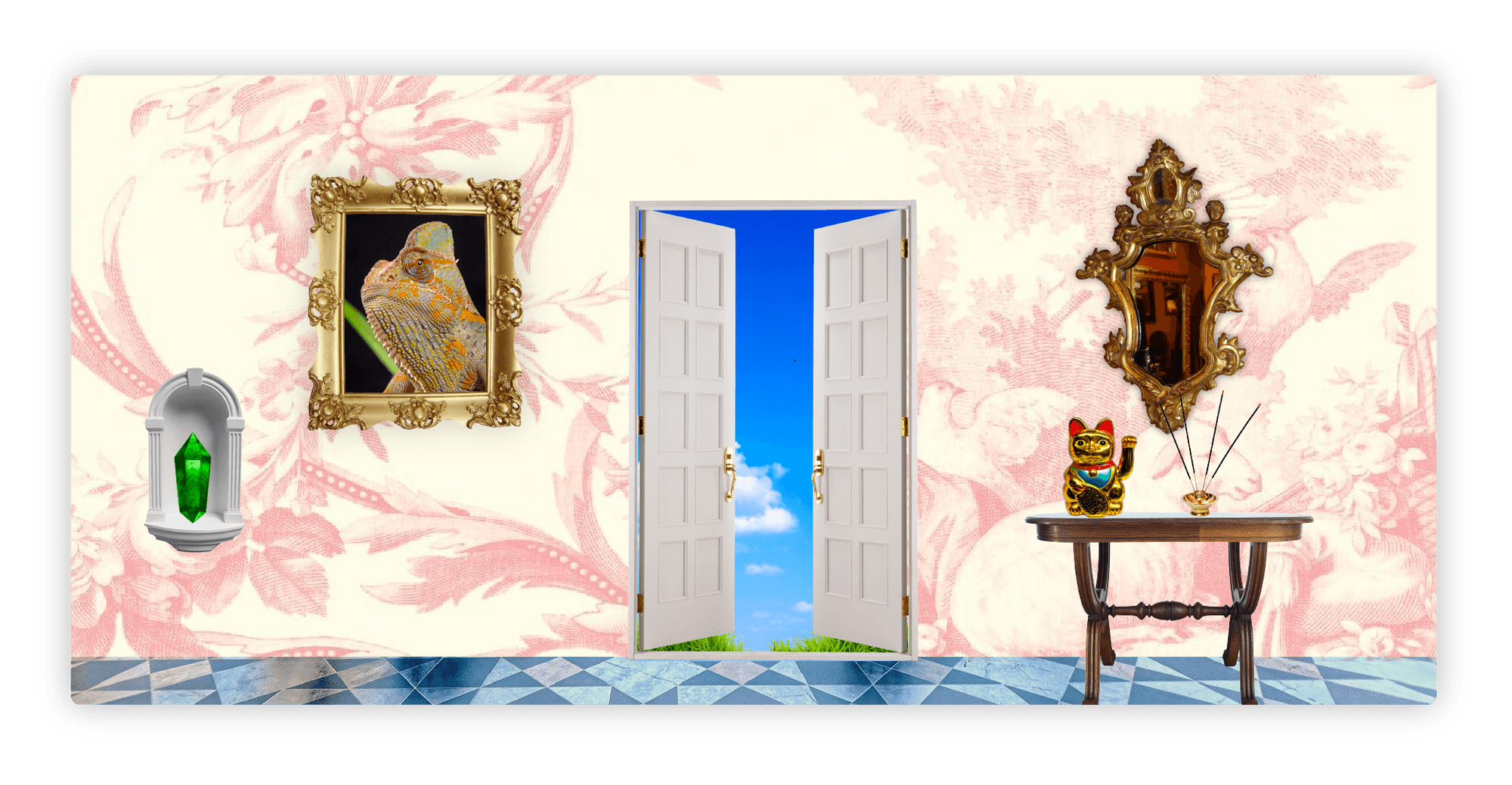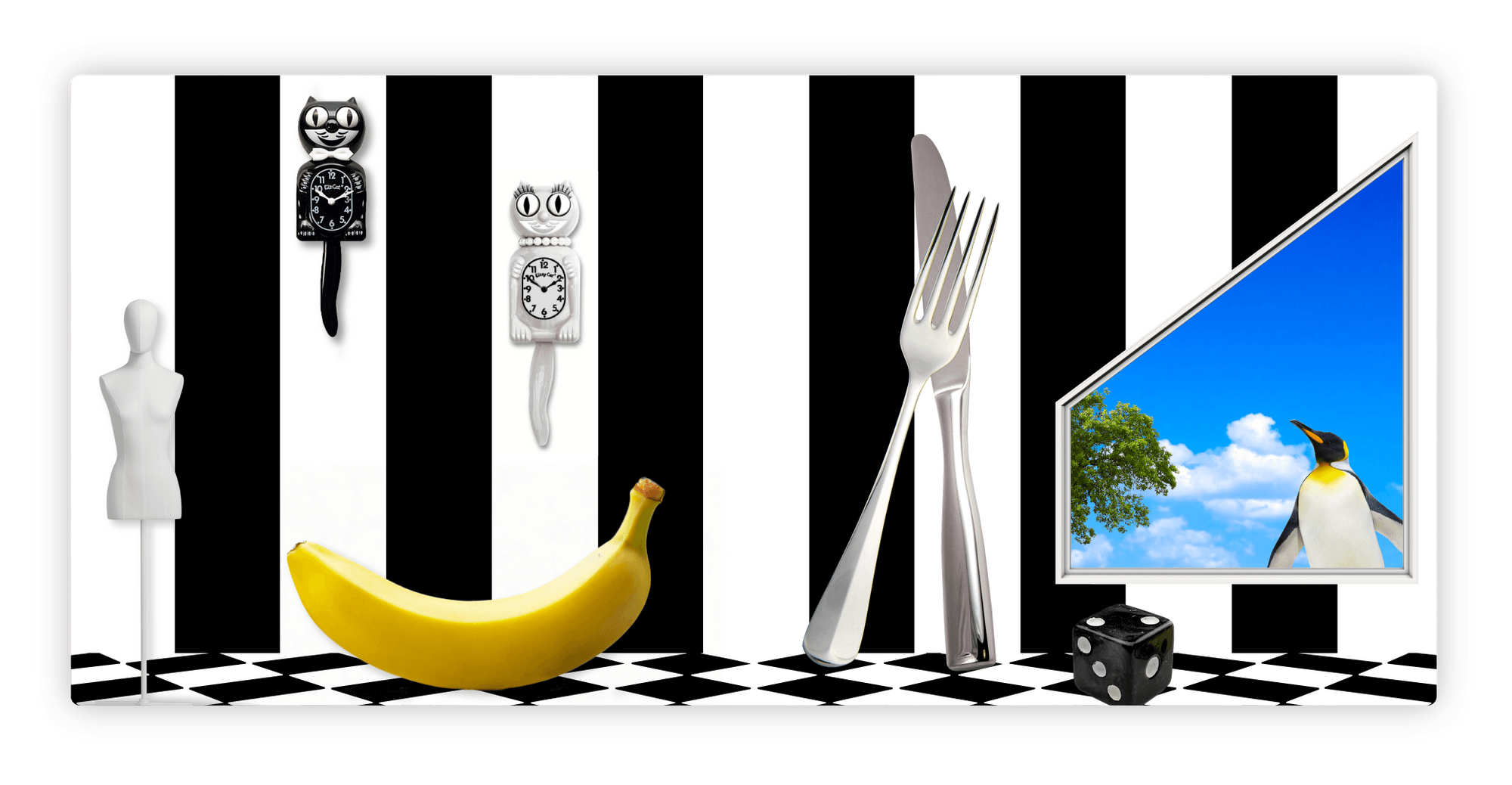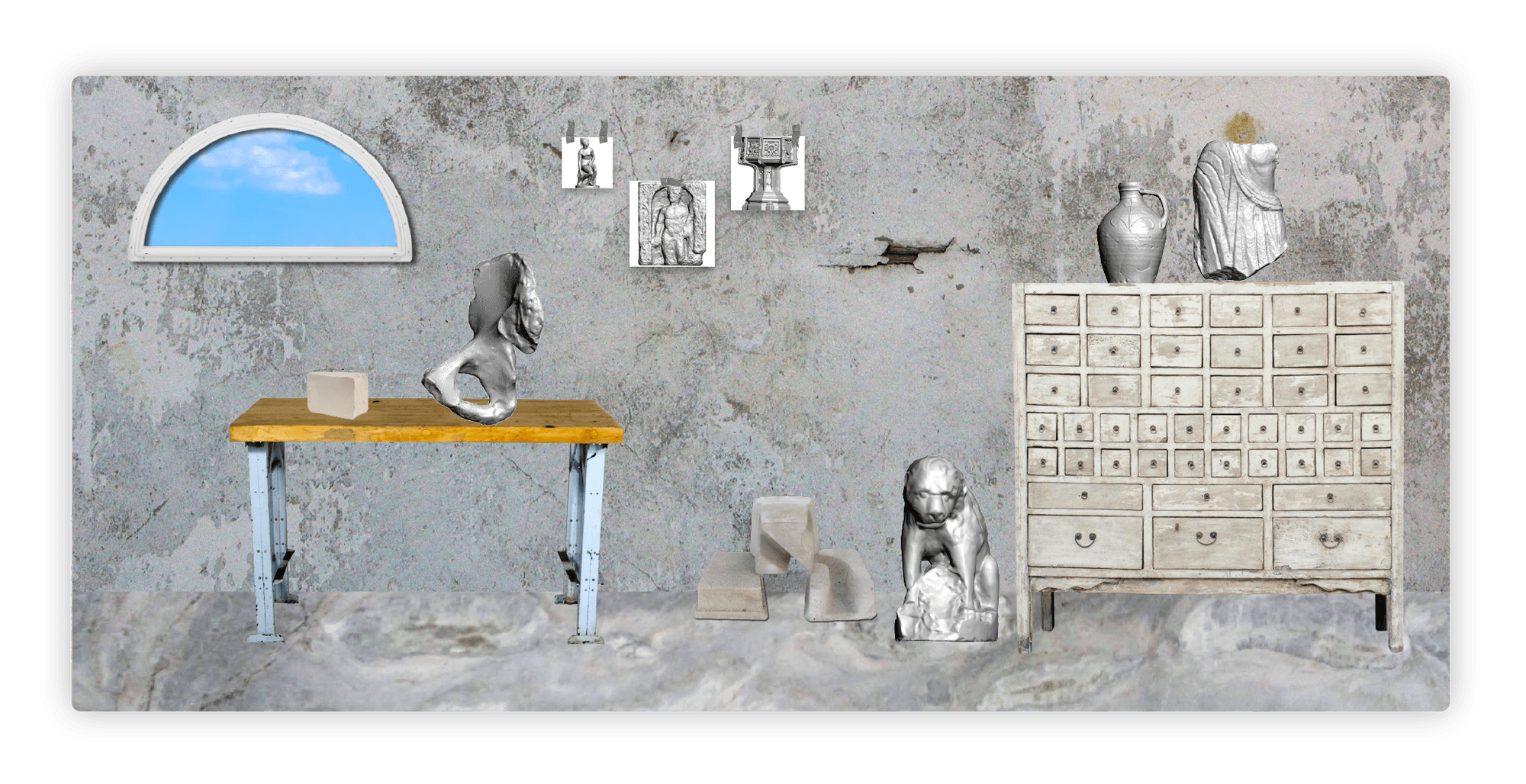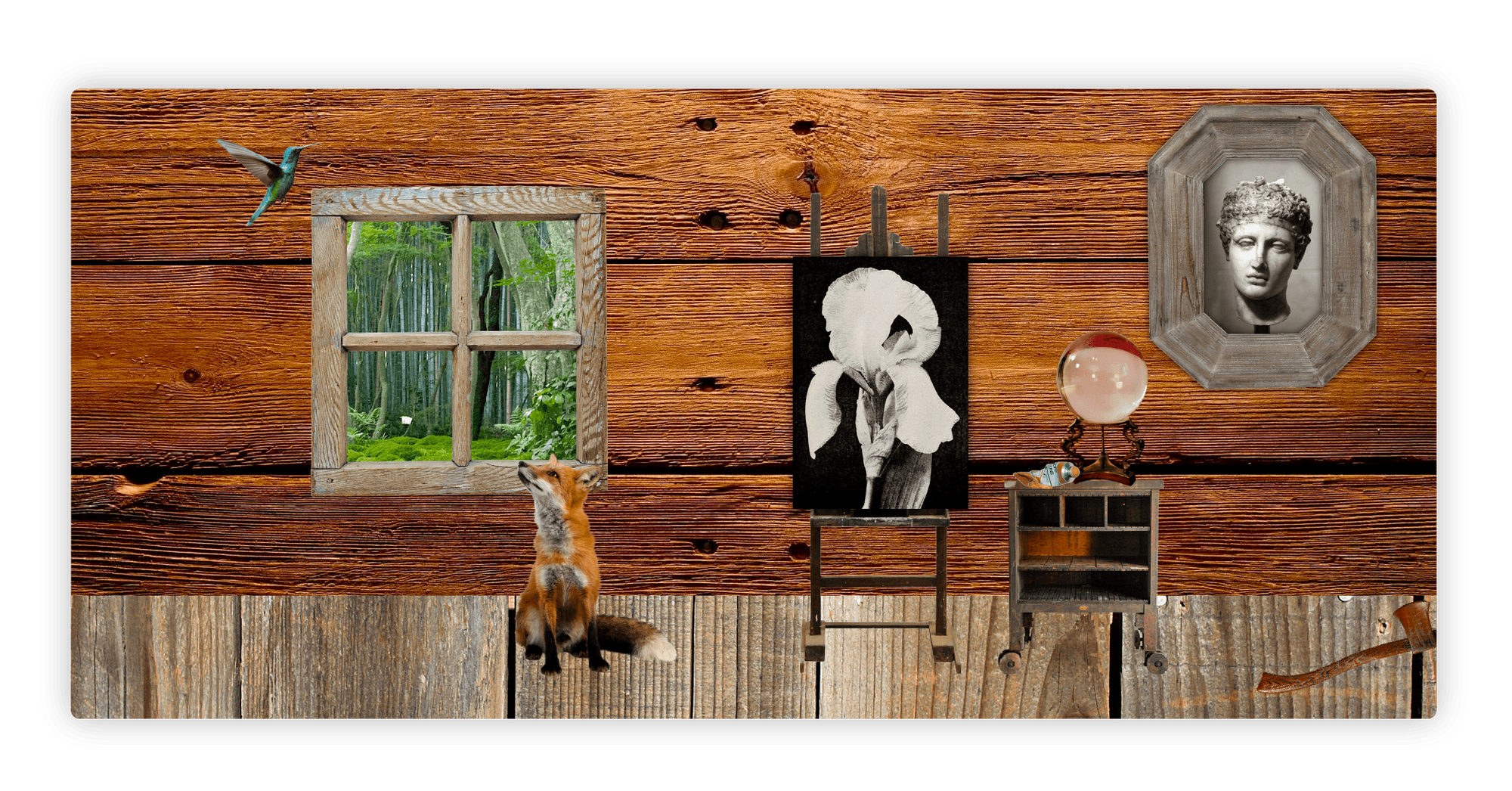How to make your home and workspace fuel your creativity
Introduction
Seventeen years ago, I emailed my network of friends and fellow artists asking for leads on a new-apartment hunt. Long after I’d settled into my new place, so many incredible referrals kept pouring in that I couldn’t keep them to myself. I started sharing my trove of apartment leads with my wider network, and Listings Project—a weekly roundup of opportunities serving artists and creative communities—was born.
As Listings Project has grown, my team and I continue to correspond with each lister directly. In the process, we have collected a wealth of insights on how people who derive their income and/or fulfillment from their creativity tend to live and work, how they aspire to live and work, and what makes a living arrangement or workspace fuel a creative practice.
In this guide, I will draw on my own observations as well as the experiences of our community to offer some insights on the process of finding and reconfiguring our homes and workspaces to inspire (not zap, drain, or deplete) our artistic lives.
— Stephanie Diamond

Step 1: Clarify your needs, and ask for what you want
Instead of scrolling through listings looking for one that fits you, try creating your own. Often, the act of thinking through exactly what you want in an apartment, roommate, or workspace—and, specifically, what characteristics in a space or person might help you be most creative—is extremely clarifying. You may be surprised by what’s out there, if you put it out there.
Some things to consider:
- How far away from work do you want to be, and how do you plan to get there (bike, subway, car, etc.)?
- Where do your friends and/or family live, and how far from them do you want to be?
- What size space would you like? What size space do you actually need?
- How important is natural light, and how often will you be home during daylight hours to enjoy it?
- What room in your house or apartment do you tend to spend the most time in, and therefore want to prioritize in your future space?
- Do you tend to spend most of your waking hours outside of home, and if so, how might acknowledging that affect your priorities?
- Budget: How much can you afford to spend each month on your space?
- Are you looking to live alone, or with roommates? How will this affect your cost of living, and what are the pros and cons? (More on this later…)
A few years ago, one lister sought the seemingly impossible: a studio in Brooklyn for less than $500 a month that he could work and live in on weekdays, when he wasn’t living with his partner upstate. It turned out that his perfect match existed: another lister had a Brooklyn studio that she used only on weekends, because she lived upstate during the week.
As you write out whatever dream scenario you’re looking for, don’t be afraid to share your skills as part of it, including gardening, lawn care, carpentry, pet care, painting, etc. We had a lister offer to plant and maintain a garden in the backyard of an apartment, providing veggies to other tenants in return for a rent discount. Because they put the idea out there, they ended up finding a personalized situation that fit the bill—something they’d likely never have found had they only browsed listings, rather than writing their own.
As you consider how to ask for what you want, note that at Listings Project, we recently started encouraging listers to share more details about themselves (and what they are offering and/or seeking) in their posts. Since this change, we’ve seen a huge increase in responses—an indication that the more personal, human, and descriptive a listing, the more likely it is to elicit responses.

Step 2: Pinpoint your requirements, but leave room for serendipity
For many people working in creative fields, budget will always be an issue. We all know that you usually can’t get every single thing you want from real estate or a roommate, so after clarifying your wants and needs, be sure to re-read your list and take note of which things are actual requirements. As you contemplate which characteristics you just can’t live without in your new space, be sure to reconsider your main objective for finding a new home, workspace, or person to live with—and keep that top of mind.
Also, remember that stepping outside of your comfort zone has the potential to inspire new ideas and personal breakthroughs. One lister, Melanie, wrote to us to say that despite her unfamiliarity with the area, she ended up living in an apartment that was located directly across the street from the high school her mother attended in the 1960s. That bit of geographical serendipity, she wrote, “ended up being the key to getting [her] film project started.”
Financial constraints are generally behind the decision to seek out roommates instead of living alone. But we frequently hear from listers whose roommates actually fuel and inspire their creativity. Often, this seems to happen when those roommates specialize in art forms that are different from the lister’s. For example, Heather, a visual artist, wrote of her roommate Mariel, a musician: “Now I help her make selections for imagery on her new album, and she helps me schlep materials for exhibition installations.”
But how do you find a great roommate? And how do you make sure that you are a great roommate? These are crucial questions, and they bring us to our next section.
Step 3: Unpacking the roommate question
Some people, particularly those who spend their work days in solitude or draw their energy from being around others, prefer living with roommates to living alone. For others, living with roommates is a financially driven decision. Sometimes it’s a matter of making a tradeoff and thinking through whether you’d rather have your own small retreat in a less-than-ideal neighborhood, or a larger, lovelier shared space in the neighborhood you prefer.
If you do decide to live with others, know that finding a great roommate is all about finding the right fit. One person’s hard-to-live-with roommate can be the yin to someone else’s yang. Compatibility and chemistry are key to finding a good match; then, once you’ve found one, consideration and communication are essential to keeping the relationship on track. To thrive in a roommate situation, it’s important to embrace your roommates—at least emotionally. You’re in a relationship with these people, not simply cohabitating in parallel. Therefore, you’re going to need to invest time and energy into the dynamic, a prospect that will naturally appeal to some people, while feeling like a real drag to others.
To find a roommate who’s compatible with you and your needs, I always recommend being as specific as possible (when writing or responding to a listing) about who you are, what you’re looking for in a roommate, how you live, and what you value in your home. If you really would like to be the kind of person who wakes up at 6 a.m. to jog and clean the kitchen, absolutely feel free to write that—but make sure to specify that this is aspirational!
Here are some examples of listings that do a great job conveying what a lister is like, what qualities they’re seeking in a roommate, how they envision the roommate relationship, and/or what they value in their home:
Varun is 27 and works in technology. He once bicycled across the U.S. and enjoys playing guitar both with friends and at the occasional open mic around town. In another life (and maybe even this one) he’ll open a neighborhood bicycle café serving large portions of hash browns and chai at dirt-cheap prices. This year he’s hosting a monthly supper club and training for a triathlon or two.
Quiet is the main thing, our landlord lives beneath us and she is on the older side. We need someone straightforward, responsible, and relaxed. No passive-aggressive roommate behavior allowed! We keep it pretty clean (but not obsessive) and are looking for someone to be cool with sharing chores (please help us keep our plants alive!). Ideally, we’d love to have someone who would be down to help with things around the house—we try to help our landlord with upkeep and fixing stuff when we can (old house!), so if being handy is your thing, that’s great!
Overall, we are pretty chill about most things, but care about recycling. We will be annoyed if you don’t! That’s the main pet peeve. Respect and open communication go a long way!
Once you live with someone, all your personality traits (and theirs) will become obvious. So it’s best to be incredibly honest ahead of time about deal-breakers. If you need quiet after 10 p.m. or tend to wake up at 3 a.m. to write, paint, or pad around the apartment, say so ahead of time. It’s also a good idea to be up-front and specific about your perspective on cleanliness and tidiness, as very kind people can have wildly different impressions of what constitutes a clean kitchen, or a living room that’s fit to receive guests.

Step 4: See what spurs your creativity by tracking it
If you’re specifically looking for a new space to help fuel your creative practice, spend a week diligently keeping a journal of when inspiration strikes and/or when you do your best work. By doing this, you can then adjust your home (or your listing) accordingly to maximize those opportunities. Do you have creative thoughts when you’re in the shower? If so, consider spending a Sunday scrubbing your bathroom, finally fixing that leaky sink, getting a new shower curtain, or even adding a white board to the wall so you can more easily jot down ideas. With these small changes, you’ll be enhancing the space where you do some of your best work.
Lister Abby noticed that she does her best creative brainstorming before bed and in the shower. Now, she makes sure to keep a notebook handy at those times. “Taking those notes into scheduled work time has been fantastic for not forgetting my random strokes of genius!” she reports.
Lister Ann says she’s often “creatively moved” in the middle of the night. “When I can roll out of bed and walk right into my workspace, it helps the energy and creative ideas flow,” she reports. Are you creatively moved in the middle of the night? If so, brainstorm some ways to make the most of that time. Consider clearing your desk off before you go to sleep, leaving some candles for more gentle workspace lighting, and/or keeping your notebook or computer close to your bed.
Step 5: Make space to space out
Whether you’re currently living in a space you love, or you’re looking for your next place, it’s always important to cultivate one particular spot in your home where you can connect with your creative flow. Even if it’s as simple as one chair near a window that you designate as a space-out chair, or a simple candle surrounded by sacred objects, it’s important to have a space that you associate with clearing your mind and spacing out. This can be done in the smallest apartment. Even in my tiniest homes, I’ve always made it a point to gather some of my favorite objects onto a single table or shelf. When I feel the need to clear my head, I sit down and focus on these objects, which function almost like an altar.
Lister Shannon likes to leave a specific art book open so that as she walks by it, she can “muse on the work.” A choreographer I know literally taped off part of the floor in his apartment, designating it as a space for creative movement. He would only venture into that section of his apartment when he was dancing, and would make a point to walk around it when he wasn’t. That square became his dedicated sacred space; when his foot crossed the masking tape boundary, it was as though he was entering a studio.
Step 6: Make your home a hub of creativity
Hosting dinner parties, art openings, or salons can be done on a small budget and can make your home feel like a hub for you and your creative friends. This is especially important in an age when so much of our social and interactive lives take place through phones and computers. When we choose to get together in person, we change the content and tenor of our conversations; and when we host such gatherings, we change the character of our homes.
A few years ago, I used to periodically invite friends to my apartment for jewelry sales featuring my friend’s beautiful sterling silver and beaded creations. Days after the guests left, the apartment would buzz with energy from the gathering. One of my art projects, Social Practice Eats, was a monthly gathering of social practice artists and cultural producers for potluck dinners in people’s homes. Each dinner was organized around a theme and a set of discussion questions, and the intimate setting enabled a level of vulnerability and candor that wouldn’t have transpired in a different space.
There are many ways you could make your home a hub for creativity—through both small and larger-scale undertakings. Matt Harkins and Viviana Olen started THNK 1994, a museum dedicated to Tonya Harding and Nancy Kerrigan, in the hallway of their Brooklyn apartment. Since then, the museum has expanded to pop-ups around New York exploring specific moments in pop and tabloid culture. Artist, educator, and curator Lukaza Branfman-Verissimo co-founded and serves as lead curator at Nook Gallery, a gallery located “in a built-in seating nook in her home kitchen.”

Step 7: Considering when it might be time for a separate creative workspace
How do you know when you need a separate studio or workspace to be most productive and inspired, instead of doing your creative work at home?
For some people, of course, paying the rent on a home as well as an office or studio is prohibitively expensive. But others find that they can increase their productivity (and often, their earnings) by making the investment in a separate workspace.
Listers have a lot to say on this topic. For some, it’s a matter of disposition. After years of trying to work from home, lister Chloe concluded that it was just not in the cards for her. “My answer is: I cannot work at home,” she writes. “I literally lose my mind.”
Alison, a writer and book editor who worked from home for nearly 20 years, found the transition to a shared (but separate) office space transformative. “The difference in my productivity, creativity, and mood is night and day,” she writes. “Even if I was home alone, being in my living space while trying to work always meant that mentally I was somehow ‘off duty’ even though, work-wise, I was most definitely on duty.”
Others find a way to make working from home work—by making sure to keep the apartment clean (including taking care of those dirty dishes in the sink), or by putting up a curtain or divider to separate workspace from living space.
Lister Koby advocates having “clear psychological (in the absence of physical) delineations between home and work.” When she works from home, for example, she gets fully dressed and puts on a little makeup, even when she’s not planning to leave the house. “It signals to my brain that it’s Work Time, not Relax Time,” she observes.
And then there’s lister Shannon, who gave up her shared studio space only to realize that it was for the best. “I work better in a private space where I can feel comfortable to be my weirdest, most vulnerable self,” she says. And that, she points out, is “where all great art comes from.”
As you consider whether or not it’s time for a dedicated creative work space, try tracking your productivity. When do you feel most focused and motivated? How and when are you able to translate inspiration into output? Be honest with yourself about how distracted you feel in your current space, and consider what would genuinely improve the situation. If all the distraction is actually coming from inside your computer, for example, opting for a dedicated workspace may not improve your productivity—whereas the distracting roommate situation would indeed be improved by a second space.
I’m not an accountant, of course, but if you do work on freelance projects from home—even part of the time—it’s worth looking into the home-office tax write-off. For tips on this topic and other advice on taking advantage of deductions, see the TCI guide, A smart artist’s guide to income taxes.
In summary…
For those of us whose creative juices are essential to our lifeblood, it is critical to make sure that our homes and workspaces are fueling our creativity instead of draining it. If you put what you’re looking for out into the universe, you may be surprised by what comes back, and you’ll almost certainly find that the act of thinking through exactly what you’re looking for can be clarifying. Even if you don’t find the perfect creative space the first time, don’t despair—it’s all part of the creative process, and you can (and will) keep evolving your creative habitat to better suit your needs for years to come.

